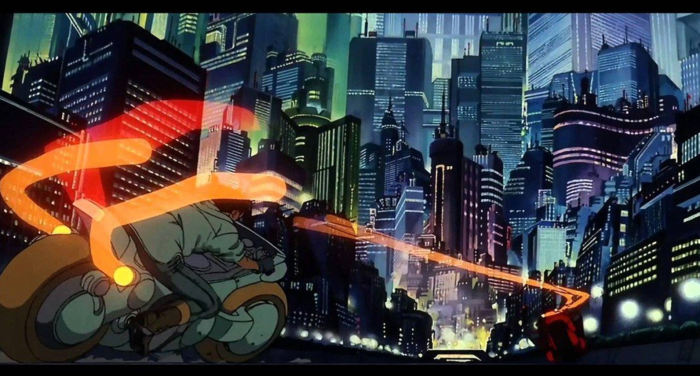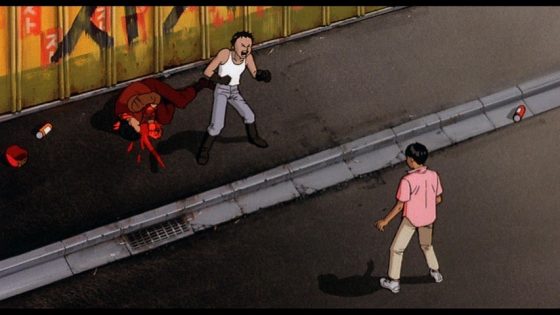
In June 2019, Taika Waititi, who gained worldwide fame as the director of Marvel’s Thor Ragnarok, was designated to the long awaited Hollywood adaptation of Katsuhiro Otomo’s Akira, which has been delayed time and time again. With him returning to direct the next installment of Thor for Marvel’s Phase 4, the Hollywood Akira movie is once again delayed (what’s going to happen first: This movie happening or the Cubs winning the World Series again?). At this point, along with its hardcore fan base, we have to agree that making a Hollywood adaptation taking place out of Japan isn’t just a bad idea, but terrible, regardless of the credibility of the director.
For the past few years or so, the idea has been that the source material will be retrofitted to take place in Manhattan as opposed to Neo Tokyo, and would feature non-Japanese characters or actors. As far as we know, we don’t know if it was still going to be filmed as “Akira,” or that the characters will maintain the same names, but played by non-Asian cast members. Either way, taking Akira from outside its Japanese setting has been a major source of controversy to fans of ALL backgrounds, and this isn’t just the outrage of the Asian community. We’re not saying this is about racism, but there are some major reasons why westernizing Akira is NEVER EVER going to work besides changing the ethnicities.
If you’re more familiar with the original manga, it deals with a lot of issues as it relates to Japanese society from World War II, the state of Japan’s youth during the 80s, and a lot of politics that still relate to modern Japan. Because it tackles issues and themes that are very unique to Japanese society, westernizing it totally ruins what Akira represents. Granted some of them can be transferred to suit American society, but if they’re going to, it doesn’t have to be under the Akira name (which we’ll eventually get to).
Japan Militarizing
Beyond predicting that the 2020 Olympics will be hosted in Tokyo, one theme from both the original anime movie and manga that still resonates to this day is the notion of Japan officially militarizing by abolishing Article 9 of its constitution. If you don’t know what Article 9 is, it’s what makes the Japanese denounce war, and it makes it illegal for Japan to form an actual military (the existence of the JSDF can be saved for a different article). Of course, this was implemented by the Americans, and the original manga also subliminally explores that relationship as it pertains to American military presence. In the original manga and movie, you see how Japan having a military has made the country a police state like in World War II. With the long ruling Liberal Democratic Party (despite the name, it’s a right leaning party) under present Prime Minister Shinzo Abe, they’re seeking to abolish Article 9 due to rising tensions with China and the Korean Peninsula.
The State of Japan’s Youth
This also comes from another quality that was more emphasized in the manga, as it also critiqued Japan’s youth culture during the 1980’s with the rise of “bousouzoku,” or “motorcycle gangs.” With the declining birth rate, teenage motorcycle gangs feel non-existent in modern Japan compared to Japan over 30 years ago. However, it goes back to how the youth in Japan tend to be alienated between then and now has changed. Granted many nations have such problems, but Japan’s circumstances are rather distinct.
In the 1988 film and manga, it explores youth alienation through both the children that were used as experiments, and with Kaneda and his gang to represent their respective generations’ definition of alienation. With the psychic children, they represent the victims of nuclear weapons, and Japan’s infamous experiments. While Japan mourned for the victims, at the same time, they were also being discriminated against. Government induced isolation is an obvious nod to this. For Kaneda and his friends, they represent a new generation in Japan that was raised during its economic rise and probably were the first to grow up in a modern urban environment. Due to the conditions set by these economic changes by making parents non-existent in their children’s lives, they found their “families” through gangs.
In 2019, the issue has transitioned to the phenomenon of NEETs and shut-ins, or “hikikomori.” Today’s youth of Japan more or less grew up in its “lost decades,” or post-economic bubble. With the rise of its senior dominated population and declining birth rate, their future prospects are in jeopardy as taxes are going to get higher to care for these seniors and to cover costs as its population declines.
An American Version Already Exists
Since Hollywood is too obsessed with remakes this past decade (some have been awful, but we’ll admit that there have also been some good ones), we can’t help but assume that they should know that an American version to Akira already exists, and that’s Chronicle starring Dane HeHaan, which we’ll admit is a good movie as it tells its own unique story. Also, there’s another American version through the music video of Kanye West’s cover to Daft Punk’s Stronger (yes, Kanye is an Akira fan).
Final Thoughts

Back in 2011, Star Trek icon George Takei commented on the notion of a Hollywood adaptation of Akira. He shared that because the original source material was uniquely Japanese and has been a gateway to anime, taking it out of its origin ultimately ruins what made it distinguishing. Takei understands what made the original Akira appealing and that whoever wants to make the movie just doesn’t get that. He understands this isn’t only insulting to the Asian community but to fans who loved the source material for its Japanese origins, and those qualities are obviously why westernizing Akira is an awful idea.

